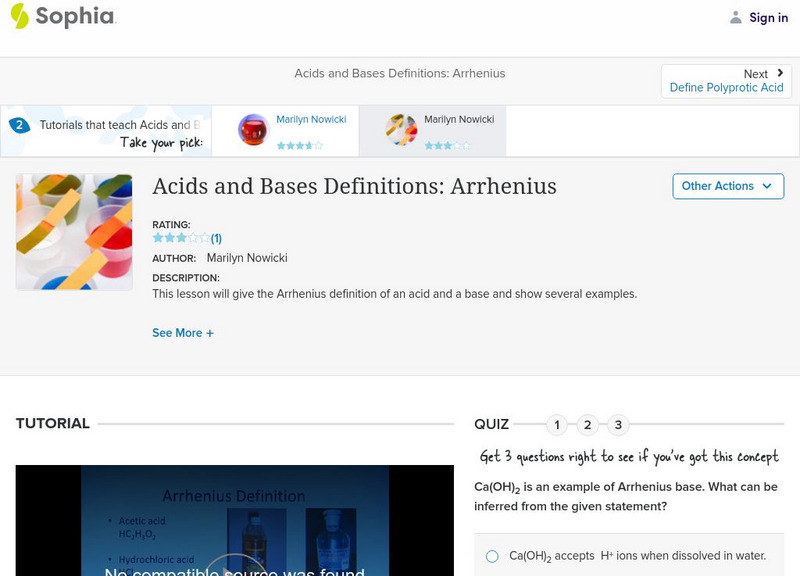Crash Course
Nucleophiles and Electrophiles - Crash Course Organic Chemistry
Organic reactions are kind of like carefully choreographed fight scenes, and nucleophilic attack is a key move. This episode of Crash Course Organic Chemistry is all about nucleophiles and electrophiles, or what happens at those...
Crash Course
Amines: Crash Course Organic Chemistry
Did you know that the fishier a fish smells, the longer it’s been out of the water? This is due to a chemical called trimethylamine, which is an amine, the class of organic compounds we’re discussing in this episode! Although they tend...
Bozeman Science
Acids, Bases, and pH
Paul Andersen explains pH as the power of hydrogen. He explains how increases in the hydronium ion (or hydrogen ion) concentration can lower the pH and create acids. He also explains how the reverse is true. An analysis of a strong acid...
Curated Video
Most common types of hydrolysis - Study with me
In acid and base chemistry, we learn that there are 3 main types of hydrolysis: salt, acid and base. In this video, I will show you a fun and crafty way to spice up your organic chemistry notes on this topic.
Curated Video
Hydroxide
Refers to the hydroxide ion, which is a negative ion consisting of an oxygen atom covalently bonded to a hydrogen atom. A Twig Science Glossary Film. Key scientific terms defined in just 60 seconds using stunning images and concise...
Professor Dave Explains
IIT/JEE Chemistry Practice #36: Precipitation Reactions
Practice REAL problems from actual past IIT/JEE exams with Professor Dave!
msvgo
Chemical Reactions : Nucleophilic substitution reactions
It explains multiple chemical reactions of haloalkanes with examples.
Professor Dave Explains
Cannizzaro Reaction
The Cannizzaro reaction is pretty old, over 150 years old in fact, but it is still an important reaction in organic chemistry. It involves the disproportionation of two equivalents of an aldehyde, meaning one is oxidized to the...
FuseSchool
Electrolysis of Water & Hydrochloric Acid
The discovery that passing an electric current through water would split it apart was made quite soon after the discovery of current electricity itself. This predates Michael Faraday’s work in this area, but it is he who introduced most...
FuseSchool
Formulae Of Ionic Compounds & Their Names: Part 2
In this video learn about polyatomic ions, how to name the ionic compounds formed from these ions and how to deduce formulae of ionic compounds formed from polyatomic ions.
Sophia Learning
Sophia: Acids and Bases Definitions: Arrhenius: Lesson 1
This lesson will give the Arrhenius definition of an acid and a base and show several examples. It is 1 of 2 in the series titled "Acids and Bases Definitions: Arrhenius."
Sophia Learning
Sophia: Equilibrium Constant of Water: Lesson 2
This lesson will describe the relationship between the concentrations of the hydrogen ion and hydroxide ion in water and define this as Kw. It is 2 of 2 in the series titled "Equilibrium Constant of Water."
Sophia Learning
Sophia: Equilibrium Constant of Water: Lesson 1
This lesson will describe the relationship between the concentrations of the hydrogen ion and hydroxide ion in water and define this as Kw. It is 1 of 2 in the series titled "Equilibrium Constant of Water."
Sophia Learning
Sophia: Acids and Bases Definitions: Arrhenius: Lesson 2
This lesson will give the Arrhenius definition of an acid and a base and show several examples. It is 2 of 2 in the series titled "Acids and Bases Definitions: Arrhenius."




